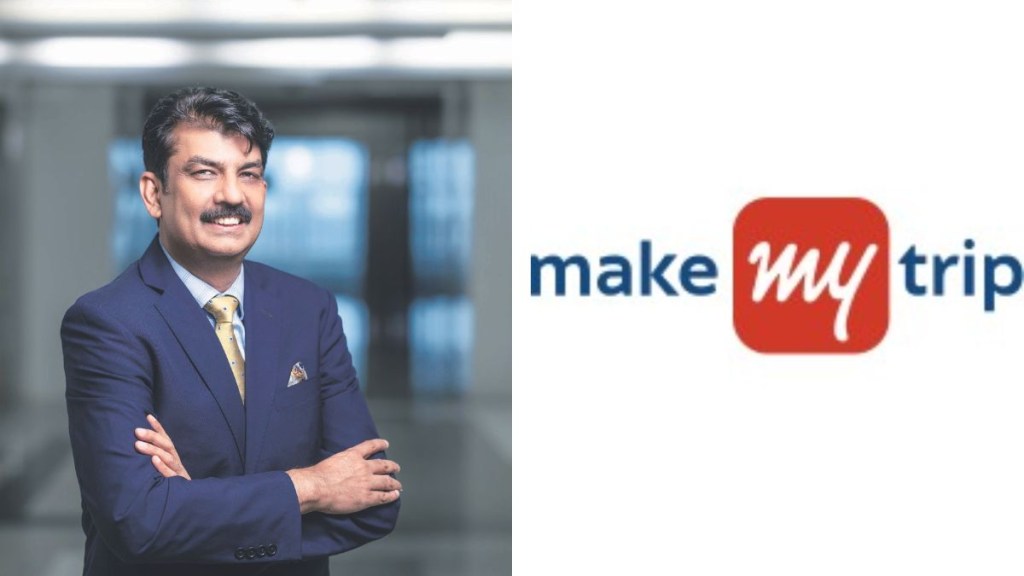MakeMyTrip has started the new financial year on a positive note, delivering its strongest-ever quarter (April-June 2023) with all-time-high gross bookings and profits. In this interview, Rajesh Magow, co-founder & group CEO, tells Akanksha Nagar about how hotel bookings from smaller cities have gone up since the pandemic and why the company expects a big boost from cricket-led tourism in Q2FY24. Edited excerpts:
We are fast approaching the festive holiday season. How is the industry faring this fiscal?
If last year’s recovery trend is any indication, this year’s outlook is positive. Having crossed our pre-pandemic numbers, we have gotten into growth mode this fiscal. Although one may witness some disruption because of the heavy monsoon, there is no lack of demand today. In the air ticketing business, we have been growing faster than the market. For the last two quarters in a row, our domestic air passenger traffic has been above pre-pandemic levels. International air bookings have seen an expectedly slow recovery and we expect to get back to pre-pandemic volumes this fiscal.
The accommodation business, which includes the hotels, packages and homestays segment, continues to shape up well on the back of strong growth in the premium and mid-premium categories of hotels. Leisure travel has gone beyond pre-pandemic levels and corporate travel has recovered strongly on the back of conferences, exhibitions, and events. The increasing desire of the Indian middle class to spend a significant portion of their disposable incomes on experience is helping the growth of leisure travel. We have surpassed our pre-Covid supply with more than 71,000 sellable accommodations listed on our platform.
How do you see the upcoming cricket season impacting business?
Big-ticket sporting events continue to play a crucial role in enhancing the country’s tourism ecosystem. On the back of the ICC World Cup in October-November, India is set to experience a significant boost in cricket-led tourism during the latter half of the year. It is likely to give a boost to all the hotels and homestays and will also help people become more aware of homestay options in the country. Our homestay inventory has been growing over the last several quarters and stands at over 23,000-plus bookable properties across 940 Indian cities. As we draw closer to the event, we will dial up the communication.
How are you building travel communities in the smaller cities?
Since the pandemic, hotel bookings from smaller cities have gone up around 17% (from about 6% in 2019), so clearly, the deeper regions of India are embracing online travel booking. These are the pockets of consumers who prefer face-time and are in need of human assistance to make bookings (especially beyond the top 25 cities). We are aiming to grow our franchise-led business by more than 50% to reach 220 by the end of this calendar year. While expanding, we look at factors such as the size of the population, availability of airports, road infrastructure, and sizable middle-class population.
For the packages business, this channel’s contribution is about 10-15% and will continue to be a strong growth pillar for us going forward. To further build travel communities in smaller towns and cities, we are also scaling up myPartner, where smaller travel agents have access to our inventory that they can sell to their own customer base. Both these platforms are essentially B2B2C platforms, where a customer wants to go to an assisted model.
With a gamut of 5,600-plus holiday packages through a broad omnichannel strategy, the offline model offers one-to-one assistance through franchise stores and an all-women team of 1,500 holiday experts; whereas the online model allows travellers to self-serve and customise these packages in real-time via the app and desktop site. We also plan to grow our holiday experts’ team by 33% from a strength of 1,500 right now, to 2,000 by the end of this fiscal.
What next in consumer experience management?
The future customer experience is moving towards personalisation and contextualisation and hence it is super-critical for us. We leverage cutting-edge technologies like generative AI and data science modelling to keep improving customer experience. For instance, we recently partnered with Microsoft Azure to launch voice and vernacular-driven conversational AI integration, using the Hindi language with voice input. We need to improve that funnel and look at expanding the languages. As we move forward, AI/ML will play a deeper role in our business and in the online travel industry in general.
What are the new trends among younger travelers?
Today’s youth are highly tech-savvy, embracing digital advancements even in smaller towns and villages. They are seeking unique experiences beyond traditional tourism, embracing ‘bleisure’ — by combining business and leisure travel, and increasingly adopting the ‘quick trips’ lifestyle through the year alongside a big annual holiday. They are also seen to be choosing more eco-friendly options, prioritising wellness retreats, and making destination choices based on digital content including social media and TV shows. These trends also reflect in their choice of accommodation — where they choose hotels for some trips and homestays or villas for others, depending on the nature of the trip.
